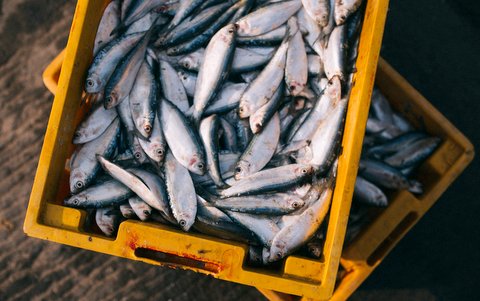Welcome to the Ingredient Exchange blog. We hope you enjoy our first post on protein alternatives. Our goal is create a library of food industry and ingredient market posts for you, our industry colleagues.
We look forward to engaging with you regularly over topics that we trust you’ll find interesting and thought-provoking. Enjoy!
Humans throughout the world — from developing to established nations — need a lot of protein. And as the world population grows, the demand for protein is only set to increase.
In fact, at a recent Hi Europe presentation, Dr. Maeve Henchion of Teagasc Food Research Center discussed the need to meet the global protein demand and avoid a protein crisis. She stated, “More people need protein [and] people want more protein.”
According to Henchion, as demand goes up — especially if the developing world increases its protein intake to that of North America — people will have to look to protein alternatives. And, as Henchion mentions, our resources (land, water and energy) have their limits.
But entrepreneurs are already looking beyond traditional protein sources. They are developing protein alternatives that, while still in their infancy, show promise for meeting the future protein demand.
Protein-packed “fish” noodles
Many cultures depend on noodles as a food source. This carbohydrate-heavy food provides large populations with an easy-to-produce, calorie-dense food source.
But noodles only offer trace amounts of protein. And in developing countries where access to fresh protein may be limited, a protein based noodle can balance carbohydrate-heavy diets.
For example, one company is turning fish protein into a readily accessible and nourishing protein alternative: fish protein noodles.
To produce the noodles, Oomi Noodles blends responsibly sourced white fish varieties into a high-protein, gluten-free noodle that has all the benefits of protein (including 11 grams of protein per 100 gram serving).
Additionally, the noodles have a texture people like and are comfortable preparing.
If this product can make its way into global markets as an accessible protein source, there’s potential to supply protein-poor populations with a practical, ready-to-eat protein — both now and in the future.
A poultry giant and “meat alternative” company unite
A small start-up might not solve a protein shortage in the beginning, if ever. But when a leading protein producer invests in protein alternatives, innovative non-meat companies can grow their output and distribution.
The poultry giant, Tyson Foods Inc. sees value in alternative proteins. In fact, they have created a venture capital fund to attract food innovators looking to create alternative protein sources.
Currently they are working with the “meat alternative” company, Beyond Meat. This young company creates a plant-based protein product from soy and pea protein. And with Tyson’s investment, they’ve been able to expand their product range and distribution.
As a product that Wholefoods positions right next to the meat section and one that sizzles and oozes “fat” as it cooks, this “cutting edge” product is a promising protein alternative for the U.S. and maybe beyond.
Insect protein: a nutritional equivalent to meat
Another protein alternative gaining traction is insect protein. To provide a global perspective, the Food and Agriculture Organization of the United Nations (FAO) identifies insects as significant contributors to “food security, livelihoods and the environment.” In an FAO white paper, they cite insect cultivation as:
- Having a higher feed-to-meat conversion
- Providing a nutrient and protein-dense food comparable to meat and fish
- An easy-to-process food source, offering economic potential for entrepreneurs in economies ranging from developed to developing
And in the west, entrepreneurs are developing insect protein products such as protein-dense flour and bars.
For example, the startup Exo creates insect protein bars. They believe they can revolutionize Western insect-protein eating habits (as sushi and raw fish once did). Between investor backing and a positive consumer response, Exo is in a good position to succeed.
Subsequently, as insect protein products create consumer interest, demand for the protein is also growing. Daniel Imrie-Situnayake identified the need to satisfy this demand. His company Tiny Farms helps insect farmers expand their insect production through technology, automation and smart system design.
As Western palates overcome a cultural distaste for insect protein, these small companies will grow. And maybe their innovative production and processing will soon reach around the globe, helping world populations meet future protein demands.
Lab meat: beef and beyond
Another protein alternative in the making (literally) is one born from a petri dish. Scientists are taking beef stem cells and growing them in the lab to create in-vitro beef.
Additionally, in Israel, scientists are developing a “recipe” for lab chicken. If they can successfully develop the chicken recipe, they could create a protein source that “accounts for one-third of the world’s total meat consumption.”
However, they’ve got a ways to go. But as scientists improve on flavor and production, they’re predicting a future where lab-produced and natural meats will appear together — identically — in supermarket food cases.
Protein Alternatives needed to avoid a crisis
Some things that are inevitable, like population growth and food demand, including a need for protein. Is it possible that these protein alternatives will offset the protein demand of some 9 billion humans come 2050?
One thing is for certain, human population growth will stress existing protein resources. And it will take the effort of innovators, and their supporters, to create — pioneer — alternative protein sources now to keep ahead of the curve.
What are your thoughts on protein alternatives? Do you foresee a future protein “crisis”? Please share your thoughts in the comments.
Need help buying, selling or recycling your ingredients, including your protein? Contact us here to see how we can help.
Image Credit: Nguyễn Linh
